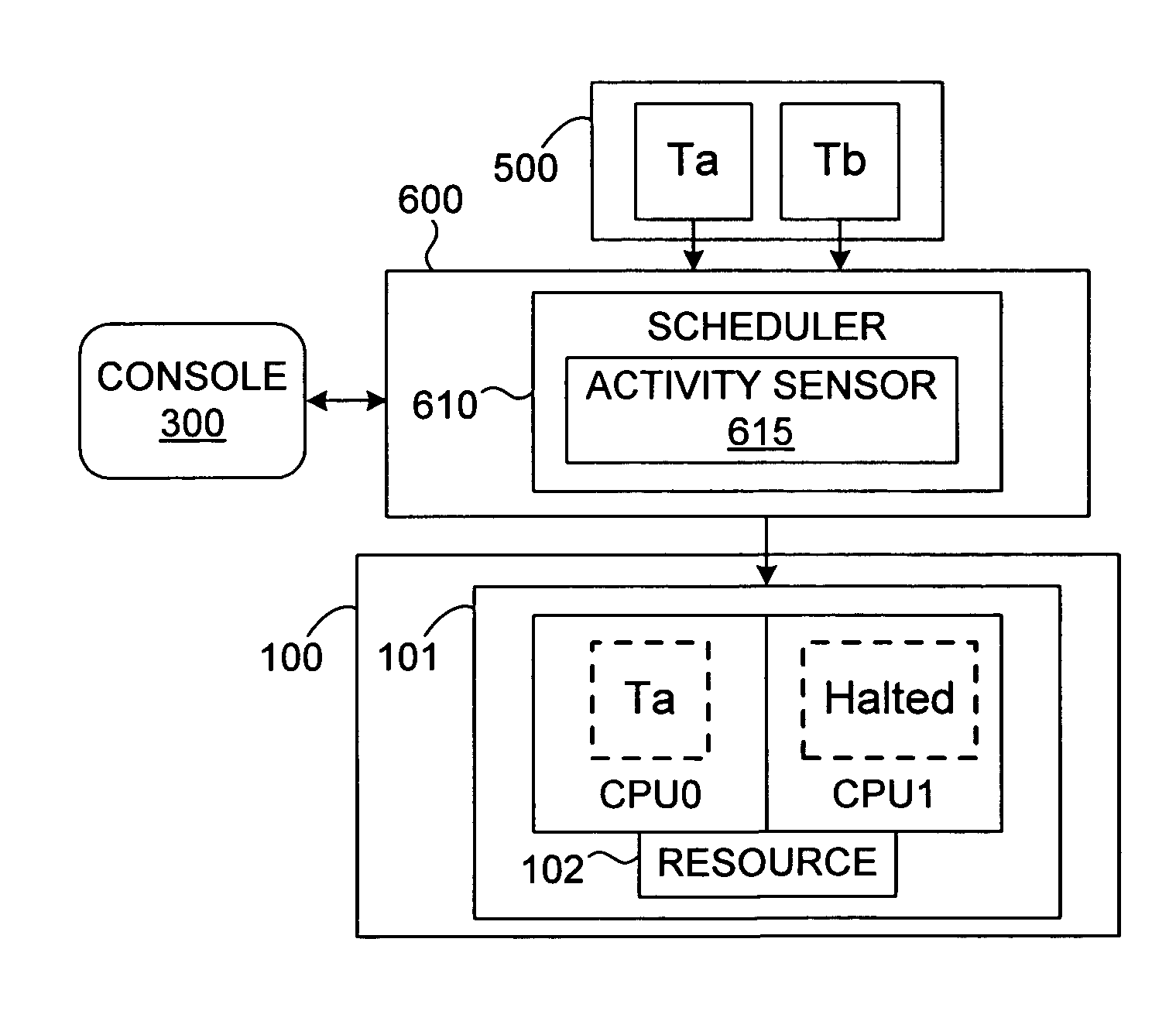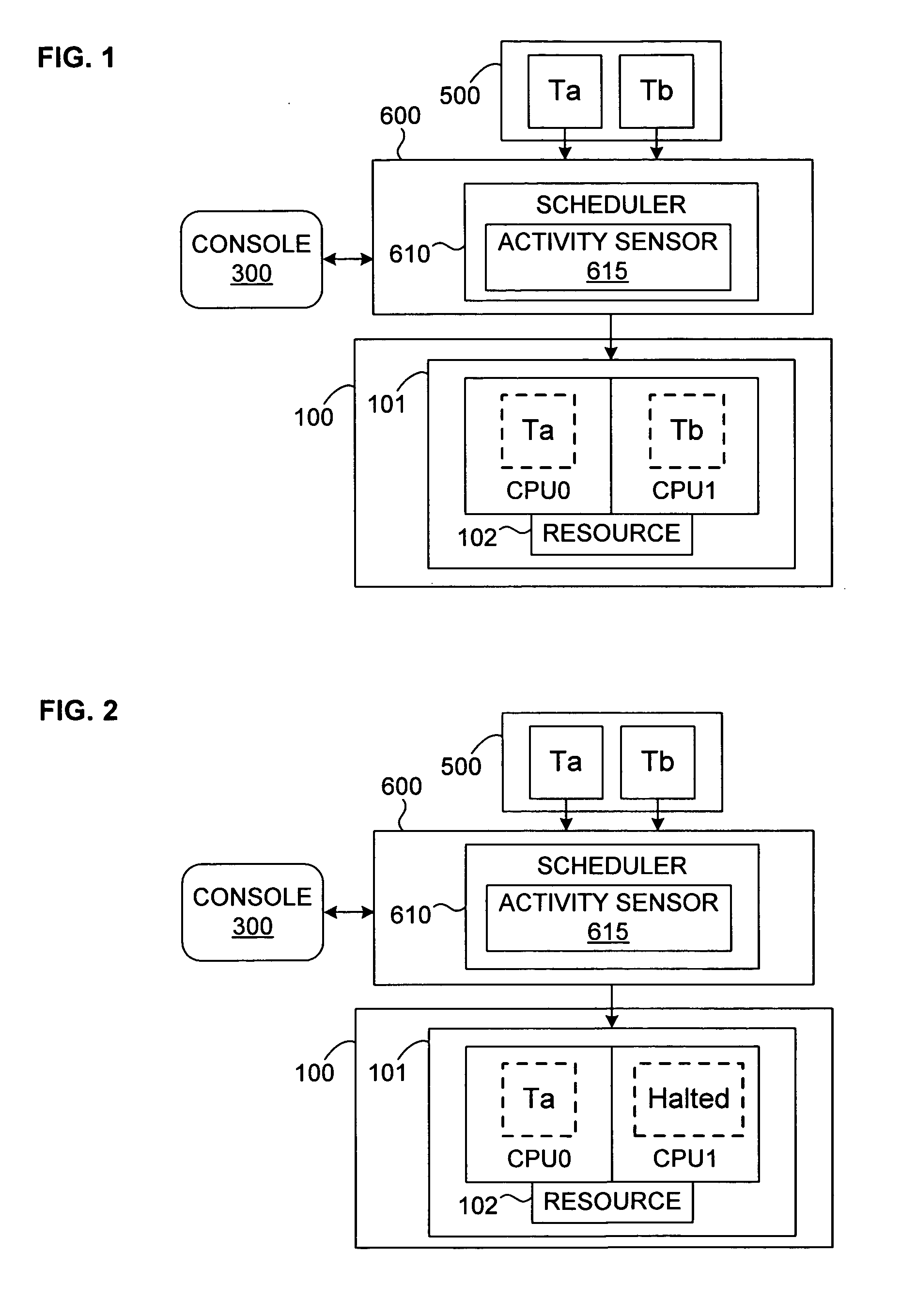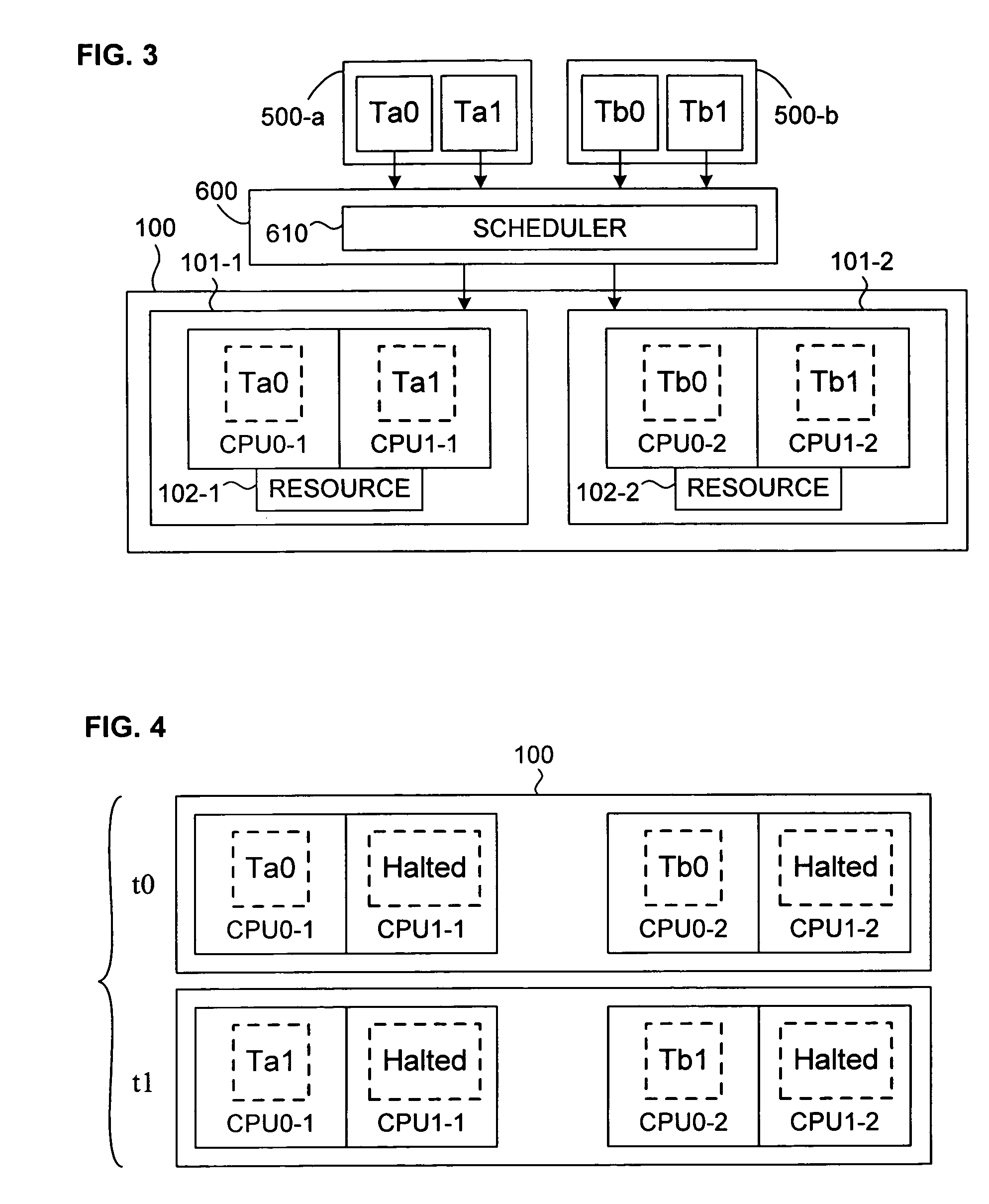Mechanism for scheduling execution of threads for fair resource allocation in a multi-threaded and/or multi-core processing system
a multi-threaded and/or multi-core processing system technology, applied in the field of scheduling, can solve the problems of limited capacity, computational cycle limitation, cpu power, etc., and achieve the effect of reducing and increasing the number of threads
- Summary
- Abstract
- Description
- Claims
- Application Information
AI Technical Summary
Benefits of technology
Problems solved by technology
Method used
Image
Examples
Embodiment Construction
[0045]The main idea of the invention is flexible enforcement of performance isolation using the hardware capabilities of SMT / multi-core processors. The simplest embodiment of the invention is illustrated in FIG. 1: A pair of “partnered” processors CPU0, CPU1 are associated in a functional group 101 such that they share at least one group resource 102 under the control of known hardware mechanisms within the group. As just one example, in a simultaneous multi-threaded (SMT, or, here, simply “multi-threaded”) architecture such as Intel Corp.'s Hyper-Threaded Technology, there are two logical processors per package (a type of group), but a hardware mechanism in the processor package itself determines how each thread accesses the trace caches.
[0046]A scheduler 610 schedules each of a plurality (two are shown by way of example) of logically cooperating executable threads Ta, Tb for execution on the processors CPU0, CPU1, while an activity sensor 615 within or accessible by the scheduler ...
PUM
 Login to View More
Login to View More Abstract
Description
Claims
Application Information
 Login to View More
Login to View More - R&D
- Intellectual Property
- Life Sciences
- Materials
- Tech Scout
- Unparalleled Data Quality
- Higher Quality Content
- 60% Fewer Hallucinations
Browse by: Latest US Patents, China's latest patents, Technical Efficacy Thesaurus, Application Domain, Technology Topic, Popular Technical Reports.
© 2025 PatSnap. All rights reserved.Legal|Privacy policy|Modern Slavery Act Transparency Statement|Sitemap|About US| Contact US: help@patsnap.com



